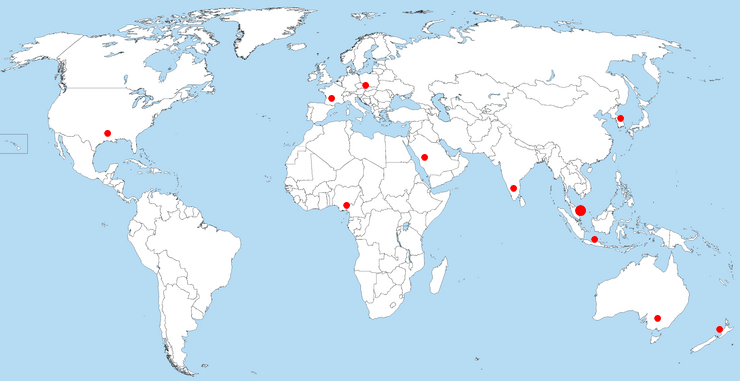FEATURE EXTRACTION FROM STEP AP224 FILE SETS
Keywords:
Feature Technology, NC Code generation, neutral file. Computer Aided Design (CAD), Computer Aided Manufacturing (CAM).Abstract
Feature technology transforms the low-level geometrical definition of a 3D model into high level
product definition, aiming for full automation of downstream manufacturing activities. Today,
feat ure has been implemented in STa ndard for Exchange of Product Model specifically in
Application Protocol 224 (STEP AP224) which utilizes manufacturing featu re definition based on
prismatic and turning parts, Hence, this research is carried out to study how STEP AP data is
stored and how the features can be extracted. The extracted features are then used to automate the generation of the NC Code for the milling process. This work is limited to isolated milling features on 2.5D parts or prismatic parts.
References
Shah. J.1 . and Mantyla, M., 1995, Parametric and Feature-Based CAD/CAM-Concepts, Techniques and Applications. Wiley, New York.
Karadkar, BJ. and Pande, 5.5., 1996, Feature based automatic CNC code generation for prismatic parts. International Journal of Computers in Industry. Vol. 28, pp 137-150.
Azwan Iskandar Azmi, 2002, Study on the implementat ion of STEP AP224 in process planning. M.Sc Thesis. Universiti Teknologi Malaysia.
Kypri anou . L. K. . 1980, Shape Classifica tion in Computer Aided Design. PhD Thesis. University of Cambridge. Cambridge
Choi, B. K., 1982, CADICAM compatible and tool-o riented process planning system. Ph.D. Thesis, Purdue University, West Lafayette. Indiana.
Henderson. M. R., 1984, Extraction of feature information from three dimensional CAD data, PhD Thesis, Purdue University, Indiana.
. Corney, J. R., 1993. Graph Based Feature Recognition. Ph.D. Thesis. HeriotWatt University.
Sakurai. H., 1995. Volume decomposition and feature recognition: Part I Polyhedral objects, Computer Aided Design , Vol. 27. No. I I. pp 833-843.
Han, J . H., 1996. 3D geometric reasoning algorithmsjor feature recognition. Ph.D. Thesis, Univers ity of Southern California.
Vandenbrande , J . H., 1990, Automatic recognition of machinable features in solid models, Ph.D. Thesis, University of Rochester.
II. ISO, 200 1, Mechanical Product Definition for Process Planning using Machining Features 2nd Edition
Bhandarkar, M.P. and Nagi, R., 2000, STEP-Based feature extraction from STEP geometry for agile manufacturing, International Journal of Computers in Industry. Vol. 41, pp. 3-24.
Han. J . H, M. Kang and H Choi. 2001, STE P-based feature recognition for manufacturing cost optimization, Computer Aided Design. Vol 33, pp 671-686.
Downloads
Published
How to Cite
Issue
Section
License
Copyright of articles that appear in Jurnal Mekanikal belongs exclusively to Penerbit Universiti Teknologi Malaysia (Penerbit UTM Press). This copyright covers the rights to reproduce the article, including reprints, electronic reproductions or any other reproductions of similar nature.






